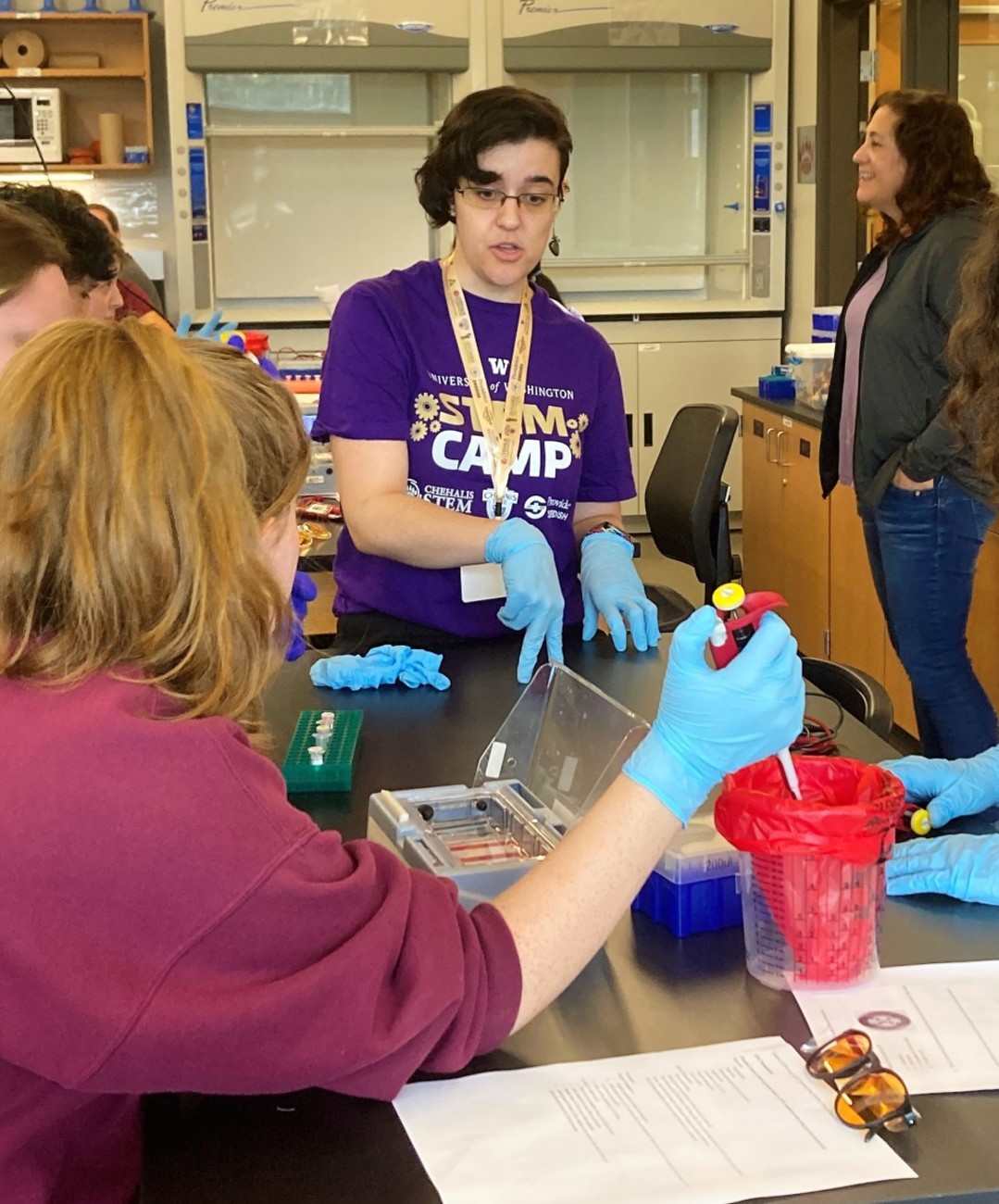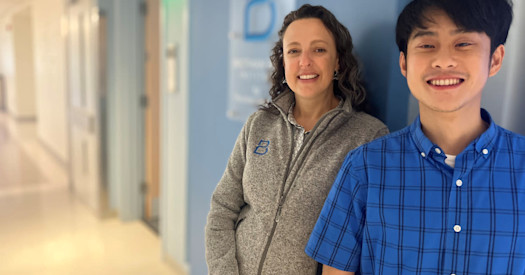 BBI Research Scientist Jordan Opsahl advises students on an experiment at the Summer STEM Camp in Chehalis, Washington. Photo by Nahum Smith of BBI
BBI Research Scientist Jordan Opsahl advises students on an experiment at the Summer STEM Camp in Chehalis, Washington. Photo by Nahum Smith of BBI
There are nearly 130,000 laboratory phlebotomists in the United States, drawing blood from millions of people every day, according to American Clinical Laboratory Association. It is one of the most common practices in clinics, hospitals, or physicians’ offices.
But on August 10, at Chehalis High School in Lewis County, Washington, drawing blood brought moments of apprehension, amusement, and anxiety for 50 high school students, It was the fourth and final day of an annual Summer STEM camp for 9th through 12th graders; the objective of this “experiment” was for each student to learn his/her/their blood type.
“There was a lot trepidation, but the students had fun getting immediate results of the blood coagulation and discovering their blood types.” BBI Research Scientist Nahum Smith
“Clearly this activity saw the most enthusiasm among the students,” said Nahum Smith, a BBI research scientist and one of four institute staff members leading the students in cell harvesting and DNA extraction; gel electrophoresis; and, of course, blood typing. “There was a lot trepidation, but the students had fun getting immediate results of the blood coagulation and discovering their blood types.”
In addition to Smith, BBI Research Scientists Jordan Opsahl and Sabrina Best, along with Student Researcher Audrey Hamm, conducted the instruction. For Hamm, a rising junior at the University of Washington, it was interesting to see a glimpse of herself among the students.
"It was such a full-circle moment for me,” she said. “I’ve done an internship at Seattle Children’s Hospital and a science expo in high school. This STEM camp reminded me of seeing myself getting interested in science for the first time.”
BBI was not the only UW representative at the camp. The College of Engineering and the Institute for Protein Design (IPD) sent contingents whose members engaged the students between August 7 and 9.
“By highlighting how protein design draws on concepts from physics, chemistry, biology, engineering, and more, we hoped to spark their curiosity,” said IPD’s Science Communications Manager Ian C. Haydon. “And by sharing personal stories of how our researchers became professional scientists, we wanted to show that there are many paths into research.”
He commented on the uniqueness of the camp, located about 75 miles south of Seattle where there are few demands for scientific research positions, and that the camp draws students from several high schools in the area.
Haydon was also “pleasantly surprised” by the students’ depth of interest and curiosity in IPD’s work.
“The students began asking sharp questions that were outside the bounds of our technical work,” he said. “They wanted to know how the science connects with intellectual property law and government regulations, for example. We encouraged this and tried to show that science doesn’t just stay in the lab. It affects all of us, and in more ways than we might think.”
Haydon’s colleague, Meg Lunn-Halbert, a graduate student in the labs of Drs. Neil King and David Baker, believes preparation for the day of instruction was both challenging and imperative.
“It is definitely hard to boil down all of the interesting aspects of the work the IPD does into a short segment that is accessible to a wide range of ages,” she said. “I think it is a good exercise for us to be able to communicate to people not involved directly with our research why we do what we do and how we achieve our goals. Not only does this help us understand further our own work, but can remind of us why we do it in the first place.”
For BBI’s Smith, if he were to lead the institute’s instruction next year, he would devote more time to engaging with small groups of students.
“In hindsight, we under-estimated the degree to which how much the students wanted to see physical examples of our work up close,” he said. “You can demonstrate a procedure in front of the class, but more interaction and learning occurred when we were rotating among the groups, giving them more hands-on attention. The third-person view of science is different from the first person view of science.”


